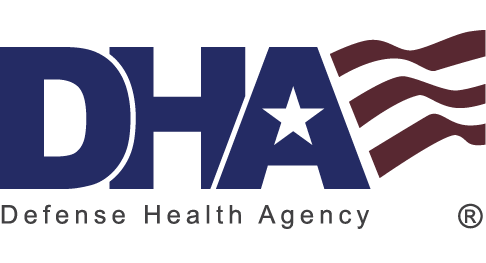April 01, 2025 | By V. Hauschild, MPH
Military public health experts who have monitored the occurrence of eye injuries among active-duty personnel say the numbers have continued to go down over the years.
U.S. Army Col. Mark Reynolds, ophthalmologist and chief of the Clinical Public Health and Epidemiology Directorate at Defense Health Agency-Public Health in Aberdeen, Maryland, has reported on these trends and supervised the monitoring of eye injury data throughout the pandemic.
Reynolds says the decline in eye injuries is in large part due to the Department of Defense’s successful efforts to ensure that service members use only the commercial protective eyewear identified in the Authorized Protective Eyewear List, known as APEL, during training and in combat.
“Unfortunately, eye injuries also occur during service members’ recreational activities such as when they play sports,” says U.S. Army Maj. John Koehler, optometrist and chief of DHA’s Tri-Service Vision Conservation and Readiness Branch at Aberdeen.
Sports activity injuries are also reflected in DHA’s annual military injury surveillance data.
“The DHA’s latest annual military injury surveillance data from 2021 showed that active-duty personnel required treatment for 13,635 eye injuries,” says Anna Renner, a senior CPHE injury prevention surveillance data analyst. “Of the medical records that indicated a cause, a quarter described a sports activity.”
“The sport reported to have caused the most eye injuries was basketball,” says Renner. “This was followed by martial arts and then tackle football. Soccer and wrestling were next.”
Basketball, football, and soccer are also consistent with sports identified by the National Eye Institute, or NEI, as having high and moderate eye injury risk.
“Eye injuries from participating in sports include corneal abrasions, blunt trauma, and penetrating eye injuries. Many eye injuries are temporary, but more severe eye injuries also occur. Some damage may even be permanent or result in blindness,” says U.S. Navy Capt. Kyle Dohm, an optometrist with DHA TSVCRB.
“All it takes is a random elbow or swipe of a fingernail across the eye during that platoon basketball tournament to take you out of the action and lead to days or weeks of limited duty,” Dohm says.
Does sports eye protection work?
According to the NEI, wearing the appropriate eye protection can prevent the majority of sports-related eye injuries.
As an example of effective injury prevention, in his 2000 American Society of Testing and Materials International, or ASTM, paper entitled, “Is the Facemask Good for Hockey?”, Dr. Paul F. Vinger, a Rutgers New Jersey Medical School graduate and practicing ophthalmologist in New Jersey, wrote:
“The ice hockey face protector is…extremely effective…Ice hockey face protectors prevent over 70,000 eye and face injuries a year with a savings...of over $10 million each year in the United States. No blinding eye injuries have been reported in any player...wearing an approved full-face protector while playing ice hockey. The success of the hockey face mask stems from the studied, deliberate process involved in the evaluation of the mechanisms of hockey injury and their means of prevention.”
The materials used in eye protection have been studied as well.
“Evidence has found that as much as 9 to10 times more energy was required to shatter a polycarbonate lens than other lens types, so polycarbonate material is recommended for impact resistance,” says U.S. Air Force Maj. Chen Yang, a DHA TSVCRB optometrist.
While the military’s APEL is not intended for individual sports, the ASTM has developed specific eye protective standard specifications for different sports. The ASTM standards are used when protective equipment is tested in independent laboratories – the ASTM does not certify specific commercial products.
Sports eye protection meeting an ASTM standard code for a particular sport will display that ASTM standard code or codes on the sports eye protector and/or its packaging. As an example, ASTM code F803-19 is recommended for impact resistance for many sports – though other ASTM standards are also required for certain sport-specific eye protection.
In addition, individual sports organizations have developed requirements and regulations regarding the wearing of eye protective equipment by their respective sport’s participants.
What can you do to reduce your risk of eye injury?
The DHA TSVCRB experts provide the following guidance:
When participating in sports and fitness activities with known eye hazards, people should know what eye protection is most appropriate and should wear it whenever they’re practicing or playing. Some sports protective eyewear can be made to incorporate prescriptions as well.
While the cost of recreational sports eyewear is the user’s responsibility in almost all cases, service members can get advice from their military optometrist or the TSVCRB regarding suitable protective eyewear for a chosen sport.
DHA public health experts remind service members and military athletes to protect their eyes in training, in combat and on the field of play:
- Use the APEL eyewear when you’re in training or performing combat operations.
- Use eyewear protectors meeting ASTM standards for intramural sports and athletic competition.
- Choose eyewear specifically made for your sport, and make sure it fits comfortably on your face.
Regulations that identify requirements in military sports facilities/fields (where service members play basketball, soccer, racquetball, ice hockey, football etc.) vary by service and installation. In most instances, such regulations are at the discretion of the installation commander.
Additional information sources:
- DHA Vision Center of Excellence (military): https://health.mil/Military-Health-Topics/Centers-of-Excellence/VCE
- DHA Vision Conservation (military): https://ph.health.mil/topics/workplacehealth/vcr/Pages/default.aspx
- NEI home (National Institutes of Health, or NIH, eye health site): https://www.nei.nih.gov/learn-about-eye-health
The Defense Health Agency supports our Nation by improving health and building readiness–making extraordinary experiences ordinary and exceptional outcomes routine.
NOTE: The mention of any non-federal entity and/or its products is for informational purposes only, and is not to be construed or interpreted, in any manner, as federal endorsement of that non-federal entity or its products.




